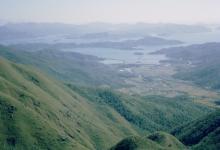Quoting sources: why it's important, and how to do it well
Primary tabs
As we post information to Gwulo - whether text or photos - it's a big help if we can include a brief note of the source, to let readers know where the information came from.
For photos, that usually means a link to the web page it came from, or a note that it is from your own collection.
For text, eg a date that something happened, you might note a link to the web page where you read it, or a book's name and page number, or even that you were there on the day and it is a personal memory.
Quoting sources helps you, authors, readers, and the Gwulo website:
It helps you ...
- When someone asks for the source of information I wrote several years ago, I've had to spend time trying to find it again. I've learned it saves time if I just note the source at the same time I post the information.
- Quoting sources helps you develop a reputation for giving accurate information, and for giving credit where it is due.
It helps authors ...
- Quoting an author as the source is a simple way to thank them for their work. Everyone likes to get a 'Thank you'!
- Sending readers to the author's web page or printed book is also a measurable benefit to them.
- If we later find there is a mistake in the information, knowing the source lets us contact the author to let them know.
It helps readers ...
- Readers can better judge how believable the information is, by checking the source. This is specially useful when there are conflicting versions of, say, a date for a certain event.
- By seeing the sources we use, readers can learn how to improve their own researching skills.
It helps Gwulo ...
- It helps build Gwulo's reputation as a reliable source for information about Hong Kong's history.
- If an author objects to their photos or text being copied, not quoting the source can give the impression we're trying to plagiarise their work, and so I receive an angry email. Where the source is quoted, the conversation is much easier.
- In turn, there are times when other websites reproduce content from Gwulo without giving us any credit. It is much easier to get them to stop if we're doing the right thing ourselves.
What makes a good source?
Easy to find
Let's take an announcement about Mee Cheung opening a new department to serve amateur photographers, that I read in one of the old online newsletters. How shall I note the source?
Source: the newspaper archives at MMIS
That's a lot better than nothing, but it'll still take readers a long time to find it, if they can find it at all.
Source: The China Mail, 1901-04-23
Now I know the newspaper to look for, and the day, but when I get there I'll have to pore through 6 pages of densely-packed text to try and find it. A page number will speed things up!
Source: p.3, The China Mail, 1901-04-23
Long-lasting
This is important for website links. The earliest page on Gwulo was written in 2014, 18 years ago. A lot of websites have disappeared in that time, and other websites that have survived have been restructured, with the result that old links to them no longer work.
If you're working with an archive site, look for a 'permalink' or 'permanent link' option. The website promises that even if they restructure their website, permalinks will continue to work.
It's also good to mix a text description with a link. eg for the 1901 newspaper mentioned above, I could quote a link as the source:
While it works, it's great - it takes me straight to the 23 April 1901 issue of The China Mail. But with such a complex link there's a high chance it will stop working at some point in the future, and then who can interpret what it meant? So combine text and a link for the best of both worlds:
Source: p.3, The China Mail, 1901-04-23
The link takes us straight to the document, the text tells us which page to view, and the text also acts as a backup if the link ever stops working.
Link to the page, not the image
A common mistake when giving the source of a photo is to link to the image file, and not to the page that has all the information about the photo. Let's take the photo of the children at Stanley Internment Camp as an example.
I could say the source is:
https://media.iwm.org.uk/ciim5/556/528/mid_000000.jpg
which would get you a copy of the image file, but nothing more. Better to link to the page where you found it, that has all the extra details about the photos - description, date, etc.:
https://www.iwm.org.uk/collections/item/object/205161661
And even better to combine text and link, as shown earlier:
Source: Imperial War Museum collection, ref.: A 30550
If you've got any more tips about sources, please let us know in the comments below.

